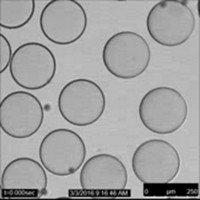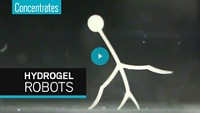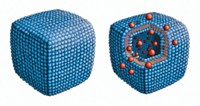Advertisement
Grab your lab coat. Let's get started
Welcome!
Welcome!
Create an account below to get 6 C&EN articles per month, receive newsletters and more - all free.
It seems this is your first time logging in online. Please enter the following information to continue.
As an ACS member you automatically get access to this site. All we need is few more details to create your reading experience.
Not you? Sign in with a different account.
Not you? Sign in with a different account.
ERROR 1
ERROR 1
ERROR 2
ERROR 2
ERROR 2
ERROR 2
ERROR 2
Password and Confirm password must match.
If you have an ACS member number, please enter it here so we can link this account to your membership. (optional)
ERROR 2
ACS values your privacy. By submitting your information, you are gaining access to C&EN and subscribing to our weekly newsletter. We use the information you provide to make your reading experience better, and we will never sell your data to third party members.
Materials
New superjelly can go from squishy to ultrahard
The hydrogel could be used in soft robotics, bioelectronics, and biomedical applications
by Emily Harwitz
December 4, 2021
| A version of this story appeared in
Volume 99, Issue 44
Like a water balloon bursting when squeezed, most soft hydrogels will squish into pieces when compressed. Now, for the first time, researchers have created a superjelly with properties that range from rubber-like and squishy at rest to glass-like, ultrahard, and shatterproof when compressed (Nat. Mater. 2021, DOI:10.1038/s41563-021-01124-x). Despite its 80% water content, the hydrogel can be run over by a car and bounce back to its original form. The team, led by Oren Scherman of the University of Cambridge, designed a synthetic polymer with a cross-linking molecule called a cucurbituril, which has a barrel-shaped middle chamber that holds two different guest molecules. Driven by their affinities for the curcubituril cavity and each other, the guest molecules continually go in and out of the chamber, dissipating the stress put on the material. After testing many kinds of electron-donating guest molecules, the researchers found that they could dramatically change the material’s properties by tuning the second guest molecule’s chemical identity to slow down the rate at which it enters and exits the chamber.“What’s really exciting is that we’ve actually understood things from a fundamental parameter scope,” Scherman says. That opens the door to applications such as cartilage replacement, bioelectronic skins, soft robotics, and prosthetics.





Join the conversation
Contact the reporter
Submit a Letter to the Editor for publication
Engage with us on Twitter